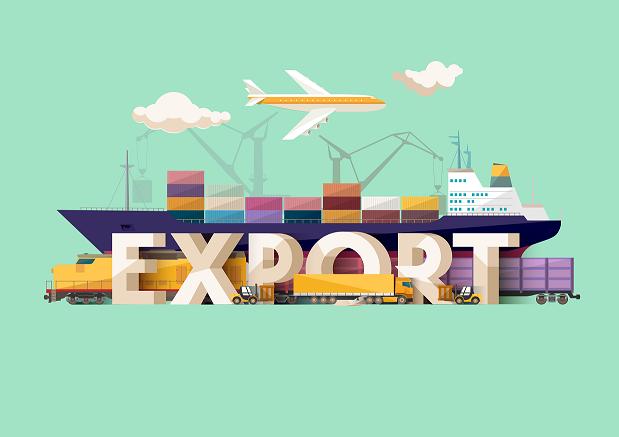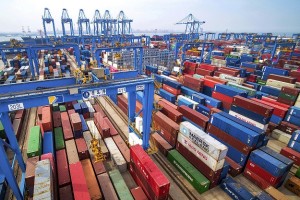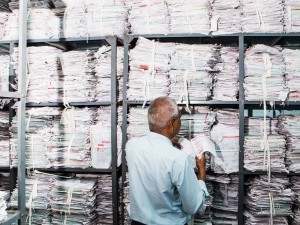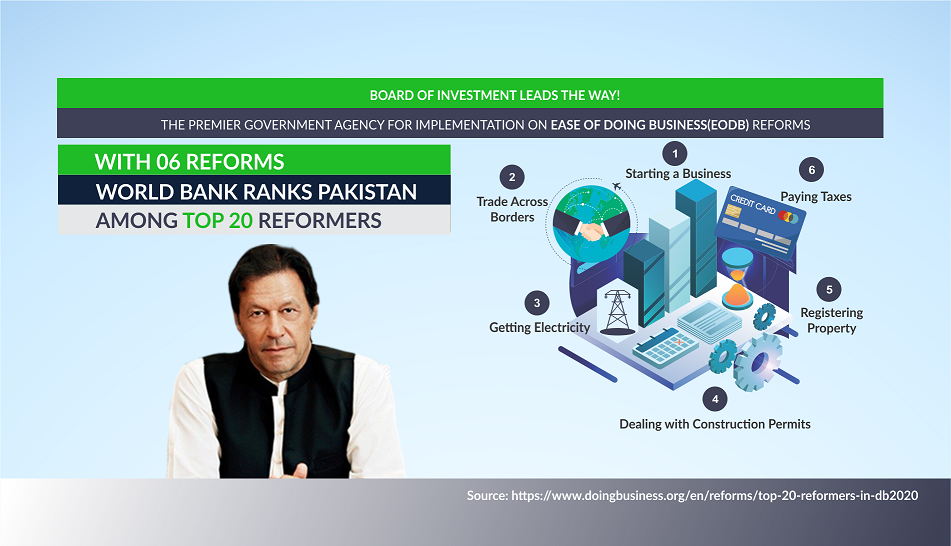Shoring up the Export Front
Aftab H. Wahla
For every economy, whether an advanced or a developing one, exports play a determinant role in bridging – or widening – the trade deficit, and it is directly associated with Current Account Deficit (CAD). In case of Pakistan, management of CAD has direct bearing upon the country’s foreign exchange reserves, stability of exchange rate and debt repayment capabilities. With massive contribution to current account deficit or surplus thereof, tapping the export potential offers time-tested, reliable path for sustained development. It also helps avoid the boom-and-bust cycle that hits Pakistan economy every 4-5 years. Development and diversification of export potential of the country would shift its economy from a consumption-led growth to long-term and sustained export-led development with massive build-up of forex reserves, stable exchange rate and reduced debt-servicing burden. Consequently, low interest rates and enhanced economic activities would help provide a strong base for curtailing unemployment and broadening tax base, and it would also offer huge fiscal space for spending on public development. The centrality of export sector in an economy warrants discussion so as to underline the export potential of Pakistan and unearth different structural and fiscal issues that are impeding the growth of the export sector on an upward trajectory in order to suggest remedies for sustained, long-term growth and development.
Pakistan is an extremely fertile country in terms of expansion in export base. Prime Minister Imran Khan rightly identified while addressing Chinese audience that strategic location of Pakistan, around 220 million population with 60 percent consisting of youth under the age of 30 years – one of the youngest populations on the face of Earth – cheap labour, rapid advancement in improving ease of doing business acknowledged by the World Bank – it listed Pakistan among top 20 improvers in Doing Business 2020 – untapped tourism potential, and huge mineral resources are some of the factors that are productive enough economically to invest and earn handsome dividends. In addition, Pakistan, with technical and financial collaboration of China, has improved significantly its transport, telecommunications and energy infrastructure to sustain current and future needs of economic activities.
Te incumbent PTI government has kick-started an ambitious reform strategy and undertaken multiple administrative, economic and legislative measures to provide an export-friendly environment. Macroeconomic adjustment policies like introduction of market-determined exchange rate to spur exports and discourage imports coupled with strong remittance inflow have helped curb the current account deficit by 55 pc in the first quarter of FY 2020 on the back of massive decline in trade deficit. Meanwhile as per All Pakistan Textile Mills Association, the textile industry has achieved 26 percent growth rate, and is becoming viable after a 10-year-long recession.
As per Economic Survey of Pakistan 2018-19, total volume of Pakistan’s export reached $24.7 billion in FY19, out of which textile and food constituted more than 73 percent. The concentration of export markets was self-evident as more than half of our exports were destined to only seven countries. As far as imports are concerned, they touched the level of whopping $56.6 billion, thereby widening the trade deficit by $31.8 billion, the highest in the last ten years. Though the first quarterly report by Pakistan Statistics Bureau, which was released on October 11, 2019, indicated the fast-bridging gulf between exports and imports with 35 percent reduction in trade deficit, the decline was achieved mainly with government policy and administrative interventions to curb import bills because export showed paltry growth of nearly 3 percent against 21 percent reduction in imports. If this trend continues on the back of massively unpopular macro-adjustment policies, it is projected that cumulative export volume in the ongoing fiscal would reach $26.187 billion, merely 5.8 percent higher than FY19. Exports of $26.187 billion are nothing in comparison to those of our competitors. In this regard, Turkey’s example is relevant here. In 1980, both Turkey and Pakistan had similar export volume, i.e. $4 billion; however, now after 39 years, Turkish export volume has reached $180 billion, more than seven times than that of Pakistan. Meanwhile Malaysia, that copied Pakistan’s five-year plans of 1960s, is touching a staggering $263 billion.
What happened to us? Why we could not maintain the momentum of 1960s? The answer is: structural bottlenecks.
Sustained economic growth demands removing structural deficiencies; otherwise, we can sustain only short-term boom cycles and it is evident from that fact that despite having massive economic liberalization and privatization, lucrative economic incentives and sustained exchange rate stability during Musharraf era, the economic managers could not prevent the deep and wide-ranging economic recession of 2008. Therefore, the identification of these structural issues is inevitable for better understanding of Pakistan’s exports sector.
Product concentration is one of the major impediments to rapid growth of export sector. Pakistan’s export base is extremely narrow and concentrated in textile, manufacture, leather, rice and sports goods. Out of these items, cotton manufacture, leather and rice accounted for 69.2 percent of our total export in FY19 (ESP 2018-19). Inability to expand and diversify this narrow base has seriously hampered our capability to enhance export revenue of country as per its true potential. Another issue is low-tech nature of these items. Contrary to the fact that medium- and high-technology-based exports account for more than 50 percent of total global trade, our share such exports is below 6 percent. It is worrisome as low-tech exports not only fetch poor revenue, but are also extremely vulnerable to prices in international markets. Moreover, resource-based and agronomical nature of these items does indicate the crucial influence of climatic conditions and weather patterns which cause extreme fluctuation in the production of rice and textile (cotton). Diversification of export base and strategic shift in its composition with the introduction of high and medium technology at various stages of production can help better exploit the new markets and create a buffer against unpredictable international prices. Pakistan needs to move towards sophistication and export of high-tech finished products via development of human resources in specialized centres of excellence and other educational institutions.
Market concentration and lack of destination diversification is another area of serious concern. As per ESP 2018-19, more than 50 percent of our exports end up in ten countries: USA, UK, Afghanistan, UEA, Germany, France, Bangladesh, Italy and Spain. Geostrategic compulsions and regional security environment as well as lack of visionary leadership have caused this massive concentration of markets that is hurting the export potential. It is surprising that Pakistan’s exports to dynamic markets like Africa, Central Asian Republics, Latin America and Russian Federation, are less than 10 percent. Resultantly, paltry 0.25 Market Concentration Index continues to bleed our export sector. In this regard, regional integration by signing bilateral or multilateral preferential or free trade agreements with regional organizations and trading partners would help exploration of new markets. ASEAN, SCO, SAARC and ECO can provide these platforms provided exporters’ competitiveness in exports. Moreover, robust and effective economic diplomacy and strategic shift from security-based to economic-based bilateral and multilateral approach would help in diversifying of markets and gaining diplomatic clout in world affairs.
Lack of agri-based export strategy and infrastructure continues to haunt the export revenues of Pakistan. All subsectors of agriculture, i.e. major crops ( rice, wheat, cotton), minor crops ( fruit and vegetables), fish and preparation, meat and meal preparation, leather and leather manufacture are suffering due to absence of technological, administrative and economic interventions to bring about value addition at various stages, poor post-harvest handling and processing methods, lack of trained human resources, poor-compliance with international standards and technical regulations on the part of our agri-based exporters in the areas of quality certification to determine Persistent Organic Pollutants-led bioaccumulation, green technologies, gender balance, bonded and child labour, food safety and animal health and virtually non-compliance with environment standards. All these factors as well as inability to explore new markets to dump our surplus are seriously undermining efforts to boost such exports. Climate change has emerged as another grave challenge to agricultural productivity. Projected increase in temperature, changes in precipitation patterns, intensification of extreme weather phenomena (cyclones, heat waves, tornados), reduction in ground- and surface-water availability would adversely impact food production and quality; therefore, agri-based exports. In this regard, provision of quality assurance and certification facilities to exporters to meet international standards like EuropGAP (Good Agricultural Practices) and HCCP (Hazard Analysis and Critical Control Points); public-sector investment in provision of post-harvest treatment, farm and non-farm infrastructure like storage facilities in order to extend the shelf-life of agri-based commodities; development of hybrid and climate change-resilient crop and animal cultivars and breeds; and market development initiatives on the part of government would pave the way for robust contribution of agriculture befitting to its potential in export sector.
Trade facilitation, business-friendly regulations, laws, policies and services to ensure uninterrupted flow of goods across borders is also a serious hurdle in the growth of Pakistan’s export sector. As per Global Enabling Trade Index 2016, which measures trade-enabling environment of a country on the basis of border administration, market accessibility, infrastructure and business environment, Pakistan was ranked 112th out of 136 countries. As for the border administration, the report highlighted cumbersome and highly-inefficient documentary and border-compliance procedures for exports in terms of both cost and time (exports require high cost and more time as compared to other countries to clear customs regulations), irregular payment and bribes are major areas of concern. The status of market accessibility, i.e. issue of tariff in both domestic and international markets, is also poor in Pakistan. Though PTI government has approved National Tariff Policy (2019-24) – another first in the history of the country – to rationalize the tariff structure for encouraging export, protecting domestic industries during infancy and promoting imported inputs to increase the competitiveness of export-oriented industries, there are still some issues that require transparency and predictability in export and import processing. Inadequate provision of physical infrastructure including ICT-based facilities, road, railways and air connectivity is also a major source of concern for potential investors. Notwithstanding that China-Pakistan Economic Corridor (CPEC) has resolved the connectivity issues to a large extent, the absence of modern logistic facilities is still hindering domestic and regional trade integration. With the completion of 22 major energy and infrastructure projects worth more than $19 billion and the commencement of work on the second phase of CPEC that includes construction of 1270-km-long highways of western leg, $8.2 billion worth rehabilitation and upgrade of 1872-km-long mainline-1 (Peshawar to Karachi railway track) and renewed cooperation on industrial and agricultural cooperation would definitely pave the way for addressing the issues related to trade facilities.
Unnecessary regulations (customs and company laws), burdensome and distorted taxation, cumbersome registration process, red-tape in availability of basic amenities like electricity, land and other business requirements, ineffectual contract-enforcement and dispute-resolution mechanisms, restricted movement due to law and order situation and limited access to finance are some of the bottlenecks. In order to eliminate regulatory, legal and bureaucratic restrictions, PM Khan announced to establish Special Task Force on Ease of Doing Business and government is striving to improve EODB index. Operationalization of PM Economic Advisory Council with effective implementation of its recommendations would also go a long way in improving ease of doing business and provision of business-friendly atmosphere.
Formulation of incoherent trade policies and non-implementation of policy frameworks are also major obstacles in knowing the long-term predictability of tariff regime. In the last decade, Commerce Division enacted three Strategic Trade Policy Frameworks. Among them, the 2009-10 STPF could not be implemented due to mismanagement while the 2012-15 STPF suffered due to non-allocation of funds. The 2015-18 STPF that targeted to bring the export volume to $35 billion by 2018 was met with failure due to resource-constrained as PML(N)-led government released only Rs. 500m against the total requirement of Rs. 20 billion, that caused the poor implementation. The formulation of fourth STPF to improve competitiveness, trade-related investment, production sophistication and diversification and trade facilitation has also been on the on backburner. This poor state of affairs is causing de-industrialization, product concentration and cannibalization of land and water resources of strategically important cotton crop by illegal plantation of sugarcane in cotton belts. Moreover, this criminal negligence is leading towards ad-hoc arrangement of trade policy via statutory regulatory orders (SROs) and institutional incapacities, for instance, Trade Development Authority of Pakistan, Exim Bank and Land Port Authority have failed in playing effectively the role of trade-supporting institutions mainly due to absence of stability in trade policies.
In addition to the above-mentioned structural weaknesses in export sector of Pakistan, low foreign direct investment and technological prowess; well-drafted and implemented labour policy, low-skilled or unskilled labour force; non-operationalization of Special Economic Zones or Exclusive Economic Zones to encourage industrial cluster formation with an aim to promote competition and competitive prices; meagre contribution on the part of Small and Medium Enterprises (SMEs) due to limited and even zero accessibility to credit to finance working capital needs are others impediments in smooth and upward growth of our exports. Removing these bottlenecks requires remedial measures on war footings.
The discussion has made it manifestly evident that non-price factors are playing a major role in abysmal performance of the export sector of Pakistan. The resolution of the issues being faced by exporters coupled with administrative, legal, regulatory and bureaucratic reforms must be the top most urgency for the incumbent government. One can hope that the government would be able to check the de-industrialization and capital flight in order to provide robust economic underpinnings to sustain long term growth.
 Jahangir's World Times First Comprehensive Magazine for students/teachers of competitive exams and general readers as well.
Jahangir's World Times First Comprehensive Magazine for students/teachers of competitive exams and general readers as well.







